The Republic Thunderstreak bridged the gap from Thunderjet to Thunderchief
On May 12th 1954 the Republic F-84F Thunderstreak went into operational service with the United States Air Force (USAF). The F-84F was Republic’s answer to the North American F-86 Sabre. The F-84F was a development of the earlier straight-winged F-84 Thunderjet. When first designed it was believed that more than half of the tooling for the swept-wing F model would be the same as that used to build the Thunderjet. In reality it turned out only 15 percent of the tooling could be reused to build Thunderstreaks.
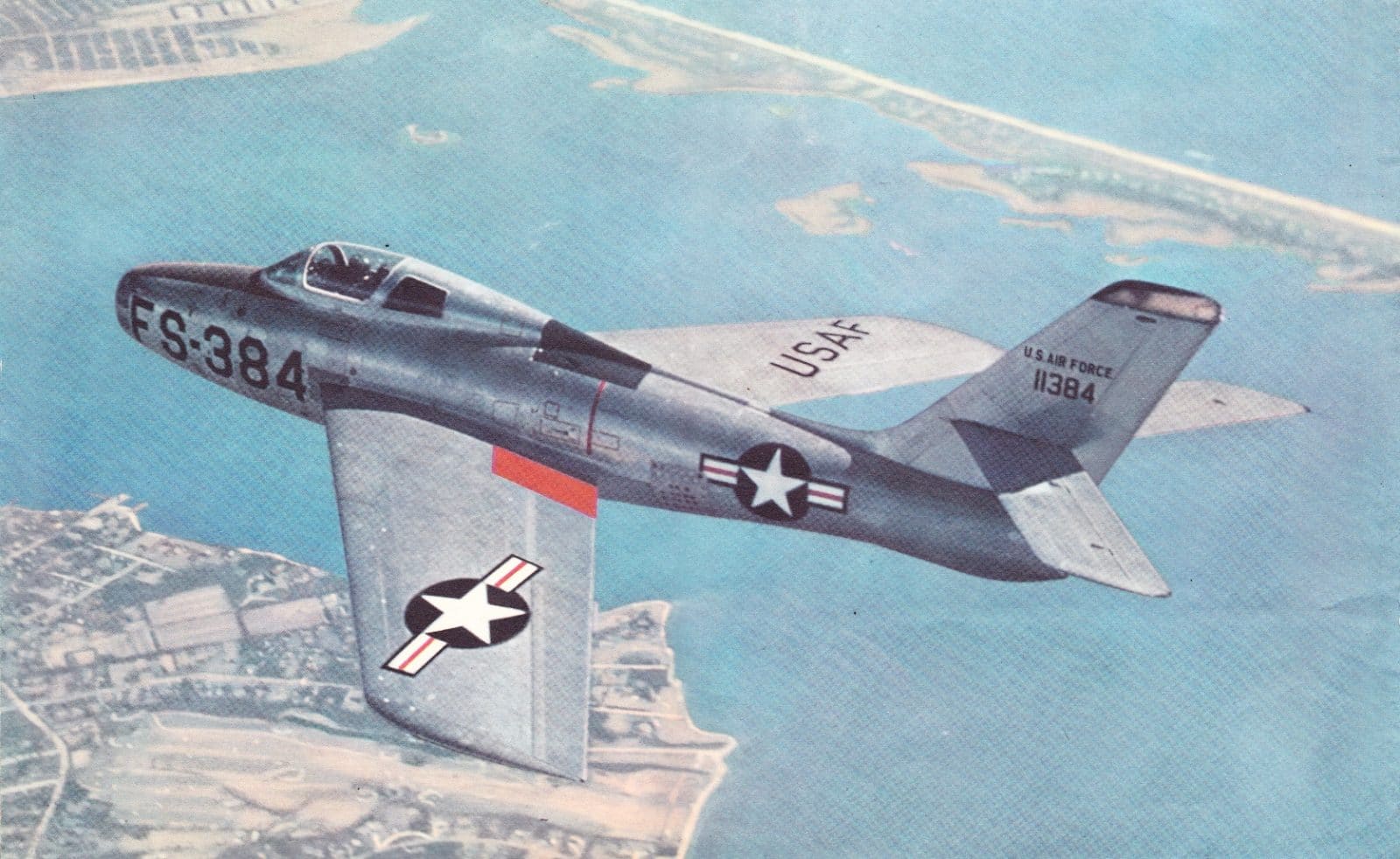
Not Quite as Spritely as Advertised
The F-84F was equipped with swept wings and tail surfaces- a departure from the previous F-84E. The initial prototypes (designated XF-96A) were powered by a single Allison / General Electric J35-A-25 turbojet engine. Republic test pilot Otto Haas first flew the Thunderstreak on June 3rd 1950. Although the F-84F was supposed to perform considerably better than its straight-winged predecessors, in actual practice the performance gains were considered minor.

Engine Challenges Again
That didn’t stop the USAF from ordering the aircraft, now designated F-84F, into production during July of 1950. The F-84F didn’t exactly go straight into service though. Those four years between first flight and service introduction were used to solve several design and performance deficiencies. The Wright J65 turbojet engine replaced the original J35, adding nearly 50% more thrust but availability of the engine was a challenge and the fuselage had to be modified to fit the larger J65.
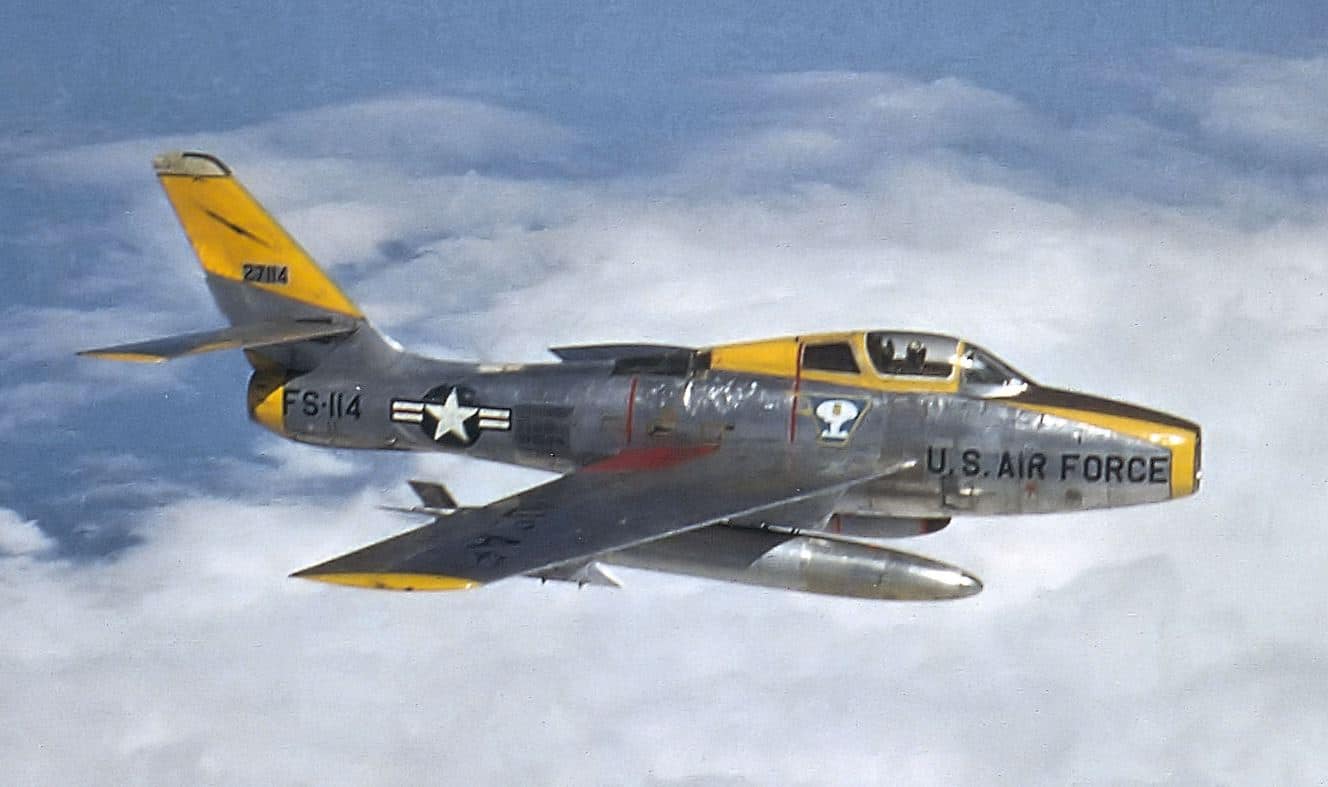
In-Service Updates and Upgrades
The first production F-84F flew for the first time on November 22nd 1952. The production aircraft had a revised canopy arrangement, relocated airbrakes, and still had bugs that needed to be resolved. The Thunderstreak went through changes intended to improve stability and control. A new one-piece horizontal stabilizer (stabilator) and added spoilers got the F-84F into service. The problems didn’t end there.
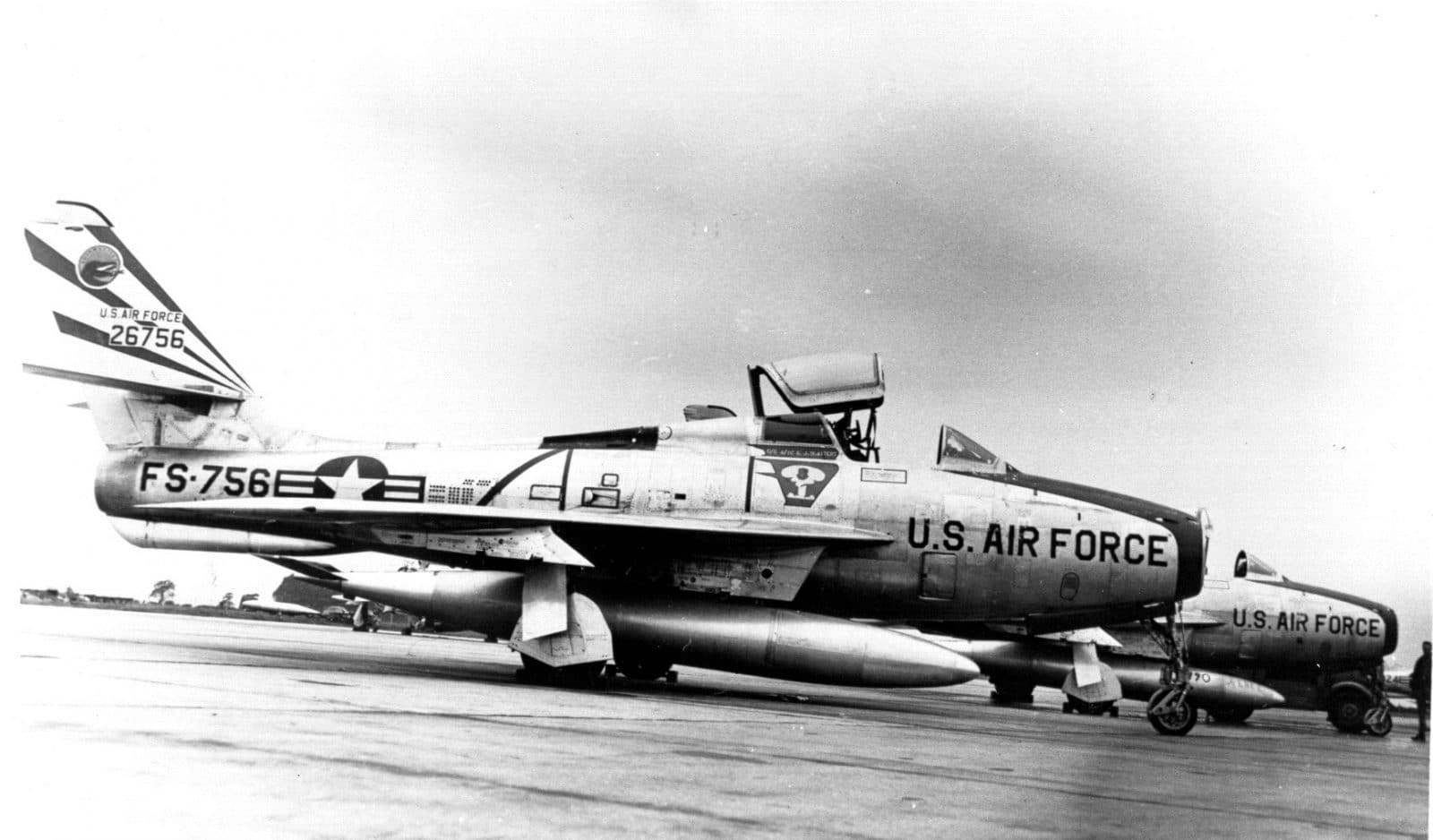
Still With the Engine Woes
During November of 1954 USAF operational testing, dubbed Project Run In, were concluded. By then the F-84F was actually found to be better than the straight-winged E and G models by a considerable margin. Pilots reported that the aircraft was stable and easy to fly. But the Thunderstreak just couldn’t catch a break. Engine problems were both frequent and serious; serious enough in fact to ground every F-84F during early 1955. The J65 engines were flaming out when the airplanes flew through heavy precipitation.
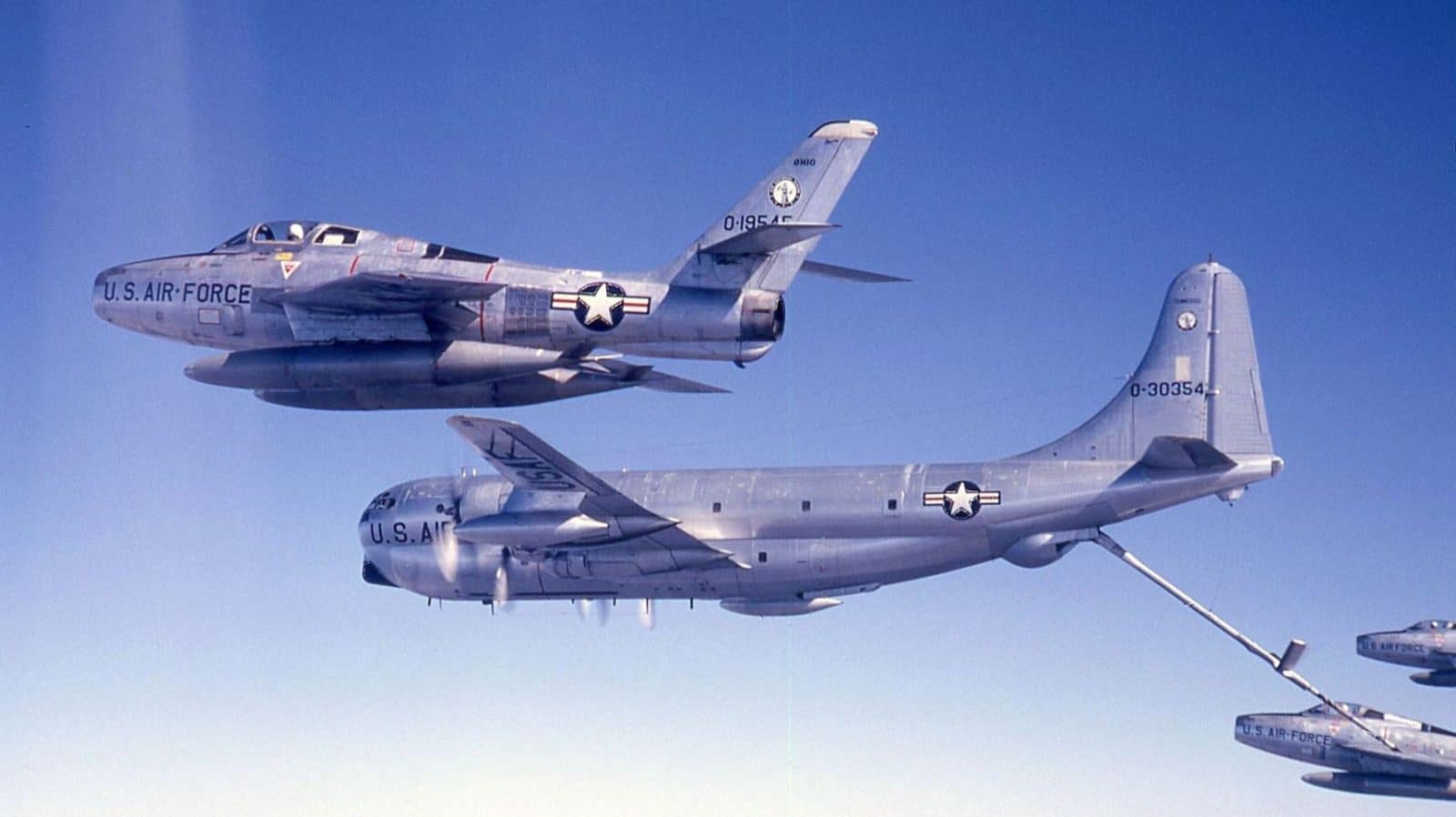
Packing a Republic Punch- But Not Using It
Equipped with six 50 caliber machine guns and capable of delivering up to three tons of bombs or rockets, the F-84F never used any of its combat capabilities while in service with the USAF. A front-line fighter-bomber that can’t get off the ground won’t last in front-line service for long. Thunderstreaks were removed from active duty squadrons beginning in 1955. They were replaced primarily by North American F-100 Super Sabres. All remaining F-84Fs were being flown by Air National Guard (ANG) and Air Force Reserve (USAFR or AFRES) squadrons by mid-1958.
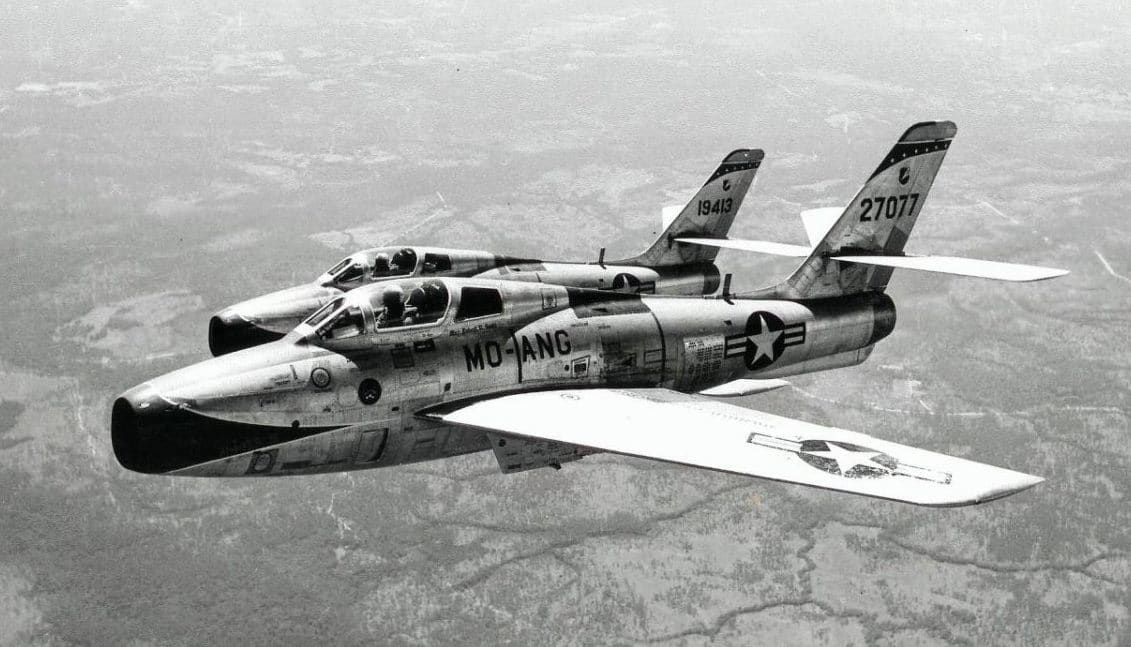
Going Nuclear and Melting Down
The squadrons still flying F-84Fs were called up for the Berlin Crisis in 1961- largely because they were equipped with the Low-Altitude Bombing System (LABS) for delivery of a single Mark 7 atomic bomb. But it was soon found that Thunderstreak control rods were failing due to corrosion. This latest problem grounded the star-crossed jets again in 1962. It took nearly 2,000 man hours to place a single F-84F back in operational service. Once fixed yet again, the Thunderstreaks soldiered on for nearly another decade, the last of the ANG examples finally being relegated to the boneyard in 1971.

Whose Idea Was THIS Anyway?
The Fighter Conveyor (FICON) program of the 1950s paired a specially modified F-84F, designated the RF-84K, with the Convair B-36 Peacemaker bomber. The concept envisioned that the fighter, armed with the atomic bomb instead of the B-36, would hitch a ride to the target in the Peacemaker’s bomb bay. The B-36 would release the smaller aircraft near the target, where it would bomb the target and then get a ride back to friendly territory after re-mating with the B-36. The concept was better than the actual practical application, and the concept never got past the experimental stage.
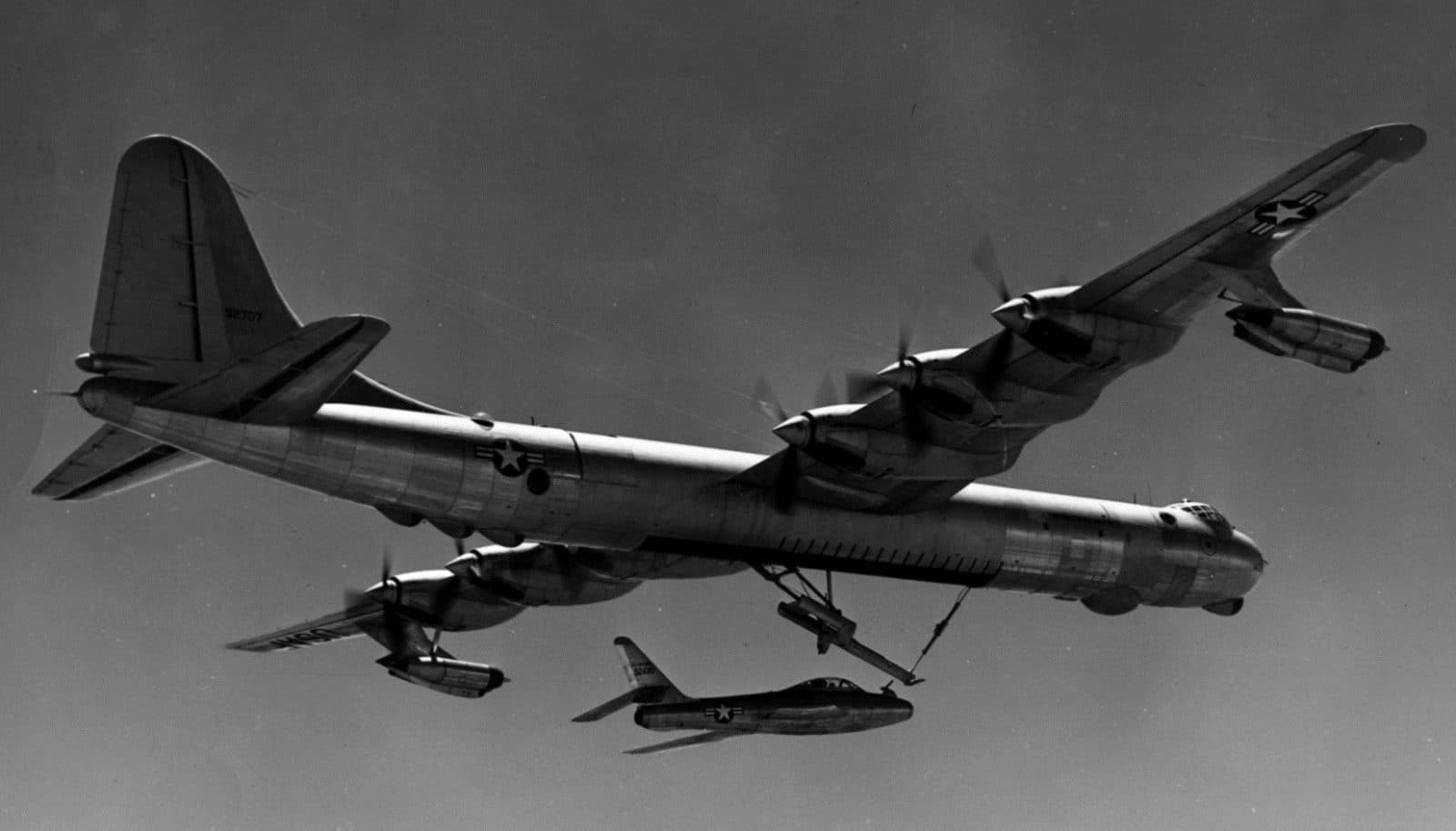

Tegel Airport is in the part that became West Berlin. (American Sector).
Correction: Tegel was in the French sector… https://media.defense.gov/2011/Jan/07/2000294740/1088/820/0/110107-D-7991K-005.JPG
Someone once said that if a runway was built that circled the earth, Republic would build an airplane that couldn’t take off on it.